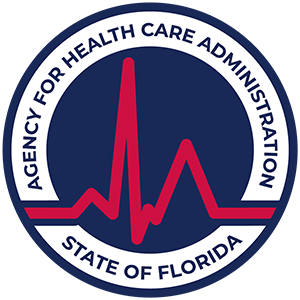How Long Does Narcan Take to Work? A Look Into its Effectiveness
Learn how quickly Narcan works, its role in reversing opioid overdoses, and what parents and teens should know to act fast in an emergency.
Over the past decade, opioids have taken the lives of over 9,000 youth, mainly in the form of fentanyl. Fortunately, one of the largest contributors to ending the Opioid crisis is the introduction of Narcan (naloxone) to the general public [1].
Narcan is an opioid antagonist and life-saving medication that plays a role in opioid overdose reversal. Read on to understand how Narcan works, how to administer it, and where to access Narcan.
What is Narcan?
Narcan was first approved by the FDA for reversing opioid overdoses in 1971 and has been used by medical professionals for over 50 years. However, in 2015, the FDA approved Narcan as a nasal spray for emergency use. This greatly expanded its use, accessibility, and has saved over 25,000 lives since then. Narcan is effective 90% of the time when administered properly [2].
According to the Journal of Addictive Behaviors, opioid overdoses have steadily decreased by 14% in states that have made it easier for the general public to access Narcan [3]. It is safe to administer to children and teens, even if no opioids are present.
How Fast Does Narcan Work?
Narcan works quickly and is used as a tool to buy time for emergency services to arrive. The speed at which naloxone works depends on the way it’s administered.
Studies show that Narcan nasal spray (the most common form used among the public) has an average response time of 3.4 minutes. Intravenous administration of Narcan, which is more common in hospital or emergency medical settings onset of action is 1 to 2 minutes [4].
This means that the individual should show signs of responsiveness and improved breathing within these minutes. The effects of Narcan can wear off after 30 minutes to 2 hours, which is usually more than enough time to receive medical attention.
What Drugs Does Narcan Work On?
Narcan only works on opioids. It binds to opioid receptors in the brain and central nervous system without activating them. It blocks and displaces opioid agonists (e.g., fentanyl) from binding and producing effects. Here is a list of common opioids Narcan works on:
- Synthetic opioids such as fentanyl, nitazenes, and carfentanil
- Heroin
- Oxycodone
- Morphine
- Methadone
If you’re teen overdoses on a non-opioid drug, we still recommend administering Narcan in case it unknowingly contains an opioid. It is safe to do so and many opioid overdoses in youth are caused by unknowingly ingesting a drug contaminated with fentanyl. Better to be safe than sorry.
How to Recognize The Signs of An Opioid Overdose
Nearly 90% of youth overdoses involve opioids. The first step of prevention is recognizing the signs that one is happening [1]. As soon as you notice the signs below, call 911, administer Narcan, and monitor the teen closely until emergency personnel arrive. The signs of an opioid overdose include:
- Stop breathing
- Blue, pale, or grey lips or fingernails
- Pinpoint pupils
- Loss of motor skills or coordination
- Vomiting or choking
- Loss of consciousness
Use Narcan if you notice any of the signs above or if you suspect an opioid overdose based on other things (e.g. finding needles or empty pill baggies).
How To Administer Narcan Step-by-Step
For safe and effective use, Narcan needs to be administered correctly. Below is a step-by-step guide for parents on how to safely administer Narcan to their teen:
- Check for responsiveness and signs of overdose. Try waking your teen up by calling their name or shaking them. Signs include shallow breathing, lack of responsiveness, and choking or vomiting.
- Immediately call 911.
- Remove Narcan from the box and peel back the cap to open the Narcan® Nasal Spray.
- Hold the spray with your thumb positioned on the bottom of the plunger, and your first and middle fingers on either side of the nozzle.
- Title their head back and support their neck. Gently insert the tip of the nozzle into one nostril and press firmly on the plunger to release the dose.
- Turn your teen on their side with their knees bent to prevent choking. This is known as the recovery position.
- If they show no signs of responsiveness after 2 to 3 minutes, use the second dose of Narcan from the box.
- Stay with them and monitor their status until emergency services arrive.
Where To Get Narcan
Narcan is widely available without a prescription in all 50 states. It can be easily purchased over the counter at pharmacies for a retail price of roughly $44.99. Insurance can sometimes reduce or eliminate the out-of-pocket cost.
Narcan can also be accessed for free in community health programs, needle exchange programs, and emergency rooms.
At Lotus Behavioral Health, we provide free Narcan dispenser kits to teens and their parents as part of community efforts to prevent overdoses and reduce fatalities. These typically include two doses of Narcan, a guide with step-by-step instructions, and latex gloves.
Community Drug Prevention at Lotus Behavioral Health
Lotus Behavioral Health is a residential treatment facility for teens located in Florida. Our programs are designed to support teens and their families with the tools they need to recover from substance abuse and co-occurring mental health disorders.
We are also committed to educating the local Winter Springs community on the opioid crisis and supporting efforts to prevent drug overdoses in teens. Our programs provide parents with the resources, education, and tools to safely store and administer Narcan in the case of an emergency. Contact us today!

Sources
[1] Leventhal, J. et al. (2018). US National Trends in Pediatric Deaths From Prescription and Illicit Opioids, 1999-2016. JAMA Network Open, 1(8), e186558.
[2] National Institute on Drug Abuse. 2022. Naloxone DrugFacts.
[3] Mutter, R. et al. 2018. Opioid-overdose laws associated with opioid use and overdose mortality. Journal of Addictive Behaviors. Volume 86.
[4] Fishman, M. (2017). Intranasal naloxone and related strategies for opioid overdose intervention by nonmedical personnel: a review. Substance abuse and rehabilitation, 8, 79–95.














.svg)








